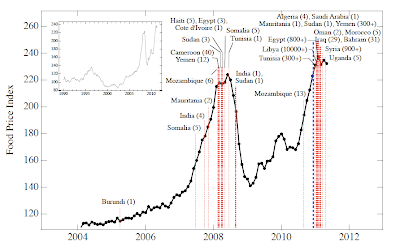A quick compilation of factoids from around the country related to the economic impact of regional production for regional consumption:
King County“A shift of 20% of our food dollars into locally directed spending would result in a nearly half billion dollar annual income increase in King County alone and double that in the Central Puget Sound region.”
Source: Viki Sonntag, “Why Local Linkages Matter: Findings from the Local Food Economy Study,” Sustainable Seattle, April 2008, http://sustainableseattle.org/Programs/localfoodeconomy Oregon“ For every food dollar spent locally by the two school districts, an additional 87 cents was spent in Oregon, generating a multiplier of 1.87 for farm to school spending.”
“Dollars spent in Oregon agriculture reverberated into 401 of 409 of the state’s economic sectors.”
Source: Ecotrust, " Farm to School Investment Yields a Healthy Return into State Coffers", March 18, 2009, http://www.ecotrust.org/press/f2s_investment_20090318.html, viewed March 19, 2009 Iowa“ If Iowans purchased a quarter of their produce from Iowa farmers, it would create $139.9 million in new economic output and more than 2,000 jobs for the state.”
Source: Sarah DeWeerdt, "Local Food: The Economics", Worldwatch Magazine, Worldwatch Institute, July/August 2009 “ Iowa State University research showed that if that region’s consumers ate five locally-grown fruits and vegetables each day for only the three months when they are in season, it would create $6.3 million of labor income, and 475 new jobs within the locale.”
Secondary Source: Ken Meter, "Local Food as Economic Development" Crossroads Resource Center October, 2008, http://www.crcworks.org/lfced.pdf
Primary Source: Swenson, David, “Economic Impact Summaries” covering Black Hawk County region. March. University of Northern Iowa Center for Energy and Environmental Education, 2008Illinois“A 20 percent increase in local production, processing, and purchasing will generate $20 to $30 billion of new economic activity annually within the state’s borders. Thousands of new jobs will be created for farmers and farm-related businesses.”
Source: Illinois Local and Organic Food and Farm Task Force, " Local Food, Farms & Jobs: Growing the Illinois Economy: A Report to the Illinois General Assembly By The Illinois Local and Organic Food and Farm Task Force", March 2009, http://www.foodfarmsjobs.org/ , viewed May 14, 2009Detroit“Just in the city of Detroit, shifting twenty percent of food spending would increase annual output by nearly half a billion dollars. More than 4,700 jobs would be created, paying $125 million more in earnings. The city would receive nearly $20 million more in business taxes each year.”
Source: Michael Shuman, “Economic Impact of Localizing Detroit’s Food System”, Fair Food Foundation, http://www.fairfoodnetwork.org/pdf/handout070617.pdf , viewed May 18, 2009New Jersey Fresh“The study showed that each dollar spent on the Jersey Fresh program increased farm revenues by $31.54 … and $54.49 of increased economic output in the State. With a current budget for Jersey Fresh being about $800,000, this means an increase in farm revenues of $25.2 million, and a total increase in economic output for the state of $43.6 million.”
Source: New Jersey Dept. of Agriculture, 2004 Annual Report: Agricultural Statistics, http://www.state.nj.us/agriculture/04AnnualReport.pdf
